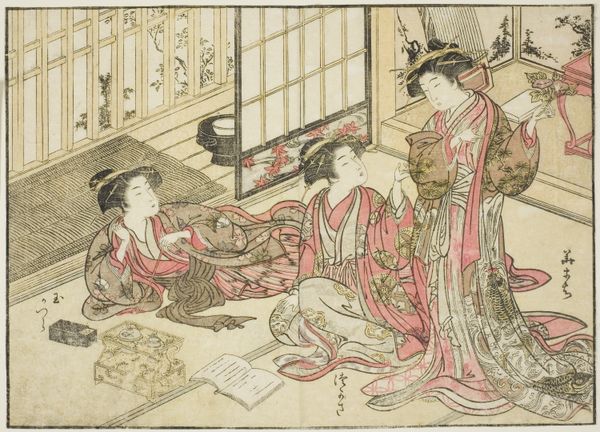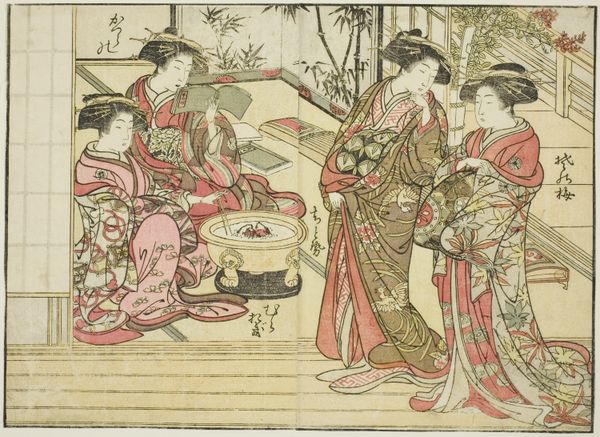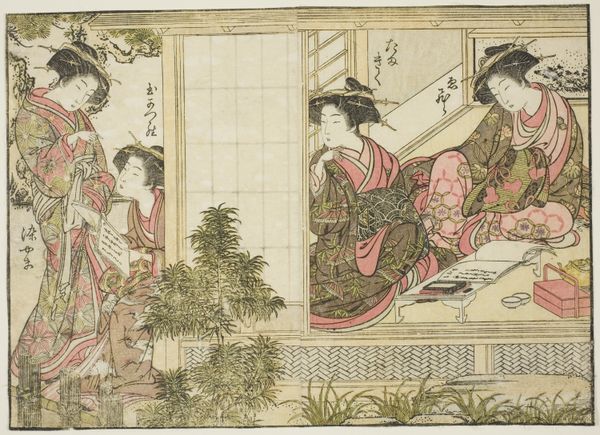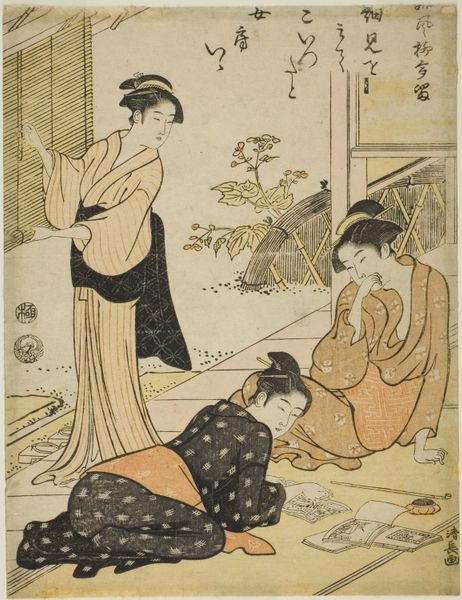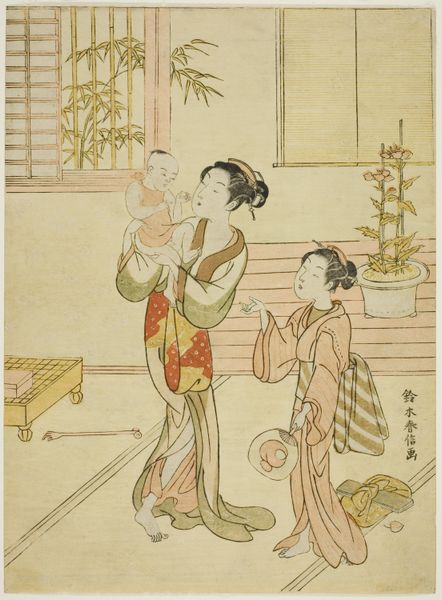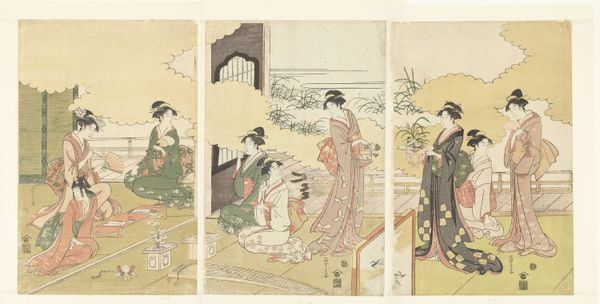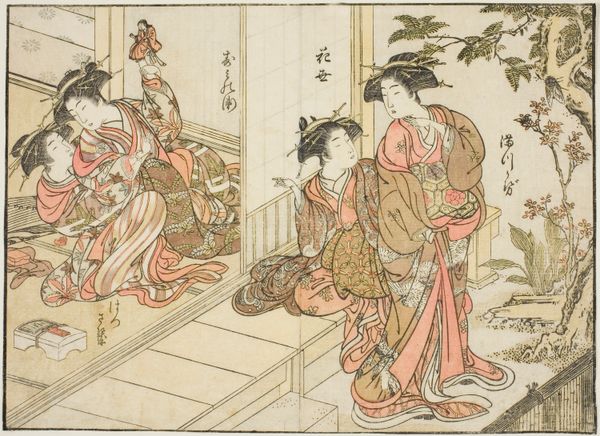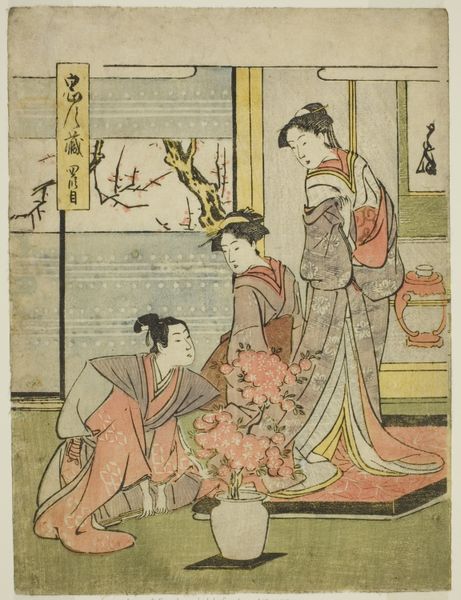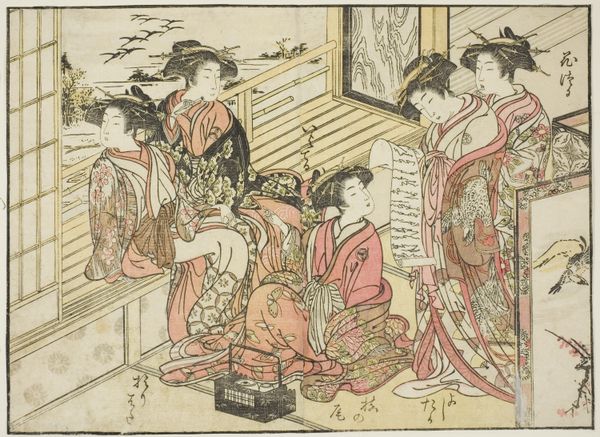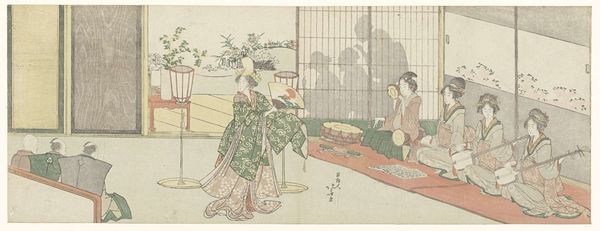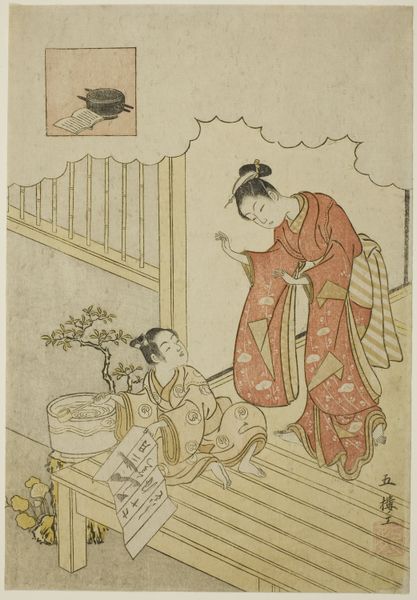
Courtesans of Maruya, from the book "Mirror of Beautiful Women of the Pleasure Quarters (Seiro bijin awase sugata kagami)," vol. 2 1776
0:00
0:00
# print
#
asian-art
#
ukiyo-e
#
figuration
#
genre-painting
Dimensions: 21.4 × 29.5 cm (8 7/16 × 11 5/8 in.)
Copyright: Public Domain
Curator: This striking image before us is titled "Courtesans of Maruya, from the book 'Mirror of Beautiful Women of the Pleasure Quarters,'" created in 1776 by Kitao Shigemasa. This print, housed at The Art Institute of Chicago, is a stunning example of Ukiyo-e. Editor: Wow. The instant impression? Melancholy grace. It’s the averted gazes, isn’t it? Like they're sharing a secret sadness in the dappled light. Makes me think of unspoken stories, quiet longings...and is that really soap she’s ladling? It’s oddly intimate and mundane all at once. Curator: Exactly. Shigemasa's work provides critical insight into the Edo period’s social dynamics, representing women whose identities were intrinsically tied to both art and commerce. We see that through their carefully chosen garments, but also through their performance of social rituals within highly codified spaces. Editor: I adore how he’s captured the weight of the kimono, the drape of fabric, almost sculptural in its precision! And look at the bamboo—rigid, yet graceful against the delicate lines of their faces. There’s such an exquisite tension between the structured environment and these women who embody both confinement and freedom, right? Curator: Indeed. Their aesthetic labor, visible in makeup and clothing, mirrors their economic labor, highlighting the complex performance of femininity in 18th-century Japan. We can analyze how these prints both reinforced and subtly challenged societal norms. Editor: Challenged? Maybe a whisper of rebellion in their stillness. Still, they haunt me… These are real women, yet they’re also playing roles. It's an elaborate masquerade with echoes that resonate even now. Curator: Absolutely. Thinking through these echoes, Shigemasa urges us to examine historical intersections of class, gender, and representation—to grapple with historical circumstances which both enabled and restricted agency. Editor: Beautiful. And sobering. Well, I won’t forget this little tableau anytime soon! Curator: Nor will I. Its contemplative beauty invites further critical engagement and deeper reflection.
Comments
No comments
Be the first to comment and join the conversation on the ultimate creative platform.
